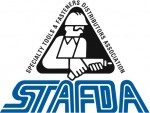Robert Footlik: Planning for Disaster
When disaster strikes, you are a community resource.
 |
 |
If there is one commodity that we have in abundance, it’s 20-20 hindsight. Unfortunately, by the time one has the opportunity to look backward, the past is already over and it’s too late to do anything about it. This is especially true when planning for disaster events that are unpredictable.
While recessions take time to build, earthquakes,
fire, tornados, hurricanes and vandalism can take only
minutes to devastate a town. Construction tool and
supply distributors have a responsibility to their communities to evaluate their own operations as disaster relief providers because potentially they have the most vital tools at the point of greatest need.
Disaster planning falls into three broad categories: pre-planning for emergencies, actions during the event and operation/salvage/restoration when the dust settles or the fire is extinguished. Each of these steps is important, but pre-planning is the most readily controlled and will dictate most subsequent actions. It is the key to
helping your neighbors and friends when they are hurting.
1. Start with “Who”
Regardless of the size of the organization, the best and most efficient team must have
a leader. One individual ultimately must make on-the-spot decisions, preferably working
according to a well orchestrated and comprehensive plan. This individual should have the total perspective and while they may delegate tasks, theirs is still the final authority. Right or wrong, the “buck stops here.”
A “Disaster Manager” can be you, the warehouse or operations manager, the head of maintenance or any of your key personnel who can handle the responsibility and make level-headed, rational decisions in the heat of the moment. This includes determining how to allocate resources and inventories to customers and first responders. Plan for more than one individual because anyone may be unable to act due to their own emergency.
Company size and complexity will dictate the organization required to implement a comprehensive plan. With more departments and divisions, it becomes increasing important to review the needs of each area separately.
For example, a simple way of mitigating data disasters is with a regular program of frequent back-up copies. But where will these be stored? On-site storage has obvious problems, but off-site computers and systems reachable only via downed phone lines or destroyed infrastructure are little better. Backing up to a portable memory card or disk entails other risks. The disaster plan must address these potential problems with appropriate procedures and redundancies.
2. Safety in numbers
With data and systems dictating access and controlling purchasing/resupply it is important to factor in likely community-wide scenarios. Establishing liaison relationships with distributors outside of the affected area should be an important component of acting as a distribution point in an emergency. Being able to tap into industry friends’ inventory can often be facilitated by working with firms that utilize the same software and programs. This is essentially “reaching out” to others before disaster strikes.
Less obvious is initiating simple procedures to keep the business in operation on a day-to-day basis. The most common occurrence is a loss of power. Simply keeping electric forklifts charged on a regular basis is a good zero cost idea. Adding a hook-up point and transfer switch for an emergency generator is a cheap way of providing power quickly, provided the plugs are compatible with readily available rental equipment. Someone needs to identify these opportunities now— not when thousands
of others are scrambling for generators.
Similarly, increasing the safety stock of 20x40-foot tarps is relatively cheap and easy. Finding these after a widespread disaster might be impossible. Thousands of dollars and lives can be saved by having emergency supplies on hand. One tarp spread over the tops of some pallet racks and aisles outdoors can provide instant shelter for both operations and personnel.
3. Training and planning are the keys to survival
If your own operation is stopped by the loss of key personnel, your role as a relief provider will be severely hampered. Keep the people safe and give them the tools they need to keep them from being harmed. The difference between escape and death lies in the training and conditioning that the personnel receive. Sending someone to use a fire extinguisher at a critical moment only works if the individual knows how to use this equipment effectively…while others are notifying the emergency authorities.
Numerous training brochures and aids are available from the Red Cross, a local fire department, your insurance carrier, the National Safety Council and a multitude of online resources. Typically these also offer guidelines for developing a comprehensive program for coping with disaster. Use these as a starting point for creating a plan in your context. The effects of even the worst occurrence can be mitigated by having trained personnel following a well thought out “script” using flexible procedures.
4. Contact information
At the very least, develop an internal phone and communications directory that includes not only the emergency information, but also policy and identification numbers. Everyone knows how to call 911, but what about insurance carriers, doctors, sprinkler contractors, electricians, utilities, etc.? Distribute this document to key personnel and maintain a copy at your home. Include both business and cell phone numbers. Update the information regularly and keep both electronic and printed copies in safe, easily accessible locations.
Develop a “mutual aid” directory that incorporates other disaster relief resources and make sure that these organizations know how to reach out to you. Coordination with the community before an event will make everyone a better responder.
Some local volunteer groups are obvious but there are also national organizations such as the American Logistics Aid Network (www.alanaid.org/). They provide coordination and a reliable supply chain to bring donations and supplies to the point of need. Contacting them with vital supplies or urgent requirements triggers their network of providers who have the inventory, transportation and personnel to make things happen quickly.
Members include supply associations and logistics providers that move materials. For example, immediately after Hurricane Sandy hit the Northeast, they located pallet jacks, forklifts, refrigerated trucks and facilities for storing and distributing relief supplies. The equipment was transported by contributing national trucking companies. There is minimal bureaucracy, so everything flows quickly without duplicated effort to deliver focused relief at the point of greatest need. This works smoothly because participants have been identified well in advance.
Operation Barbeque Relief (http://operationbbqrelief.org/) was founded in 2011 to help the victims of the Joplin, Mo. tornado disaster. Last year their mobile grilling teams served over 183,000 meals and this year equaled that number after Hurricane Sandy. While the food and beverage requirements are in place from some national suppliers, they always can use emergency lighting, coolers and other support supplies. As a food distribution point, they can also be a drop location for other relief materials.
In the event of an emergency, having this directory available can save precious hours during a recovery effort.
Moving Ahead
Every company and region has different needs and resources, but by planning ahead, training everyone, acquiring emergency supplies before a disaster and adding simple tools now, lives can be saved and recovery can be accomplished far safer and faster.
Do this now, before disaster strikes. People are depending on you.
In the next issue, I will provide a comprehensive checklist of things to address when faced with floods, fires, earthquakes, hurricanes or tornadoes — and specific areas of focus for implementing regroup/rebuild efforts. CS
STAFDA showroom and warehouse consultant Robert B. Footlik is CEO of Footlik & Associates, LLC, Evanston, Ill. He writes STAFDA’s Warehouse Advisory and can be reached by email at robert@footlik.com.
















